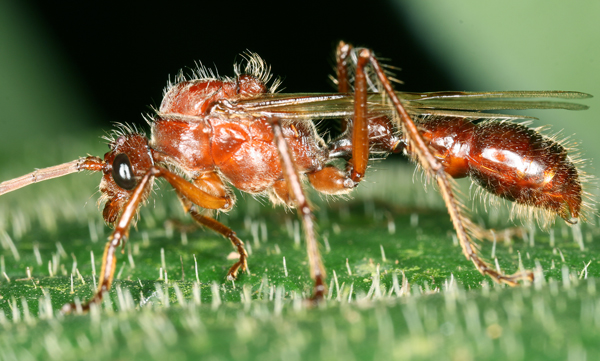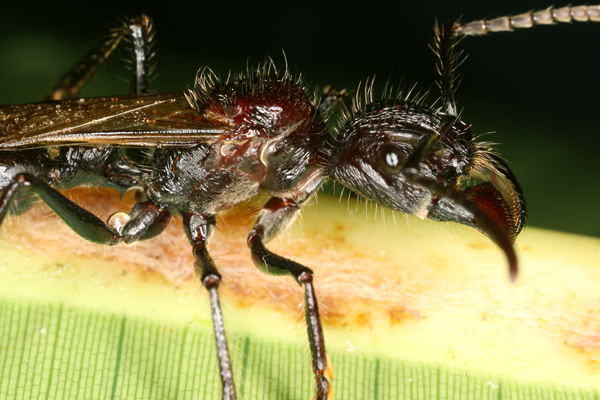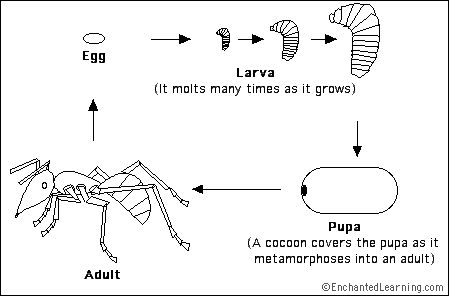
Reproduction
The reproduction
cycle in Paraponera clavata is a process that is common
throughout the genus, Camponotera, that it belongs to. The
entire ant colony is focused around the queen ant, whose main
purpose in life is to reproduce. During a queen’s brief mating
period, she will mate with several male ants. She carries the
sperm internally in a pouch located on her abdomen called the
spermatheca, where sperm remain unable to move until she opens a
specific valve allowing the sperm to move through her
reproductive system and fertilize her eggs. The queen ant has
the ability to control the sex of her offspring . Any of her
fertilized eggs will grow to be female, worker ants, and the
unfertilized eggs will be males who’s sole purpose in life is to
fertilize a virgin queen, in which they will die soon after.
These virgin queens are only produced when there a
significant amount of worker ants that will ensure for the
expansion of the colony.
The queens of each colony, whether virgin or not, live
much longer lives than that of their worker ants
(Tom, 2013)
(Breed, 1988).
The first step of
the mating process is called nuptial flights, in which the males
and virgin queen ants will leave the nest in a large swarm.
After the mating process is finished, both the queen and male
ants will lose their wings. Shortly after, the queen ant will go
off by herself in search of a new place to begin her new nest
and colony. She digs a space for her eggs, and raises her first
offspring, consisting of all worker ants, by herself. After
these worker ants have grown, they are in charge of expanding
the nest and moving newer eggs to specialized chambers. Once
these eggs have hatched they turn into larvae surrounded in a
protective cocoon until the adult ant is ready to emerge (these
are mainly worker ants).
The next stage in
the colony is called the ergonomic stage in which the workers
are entirely devoted to the expansion of their nest and colony.
It may take as little as one season or even up to five years for
the colony to have grown large enough to enter into the
reproductive stage again, in which the queen ant will begin to
produce virgin queens and male ants that will then begin the
whole process over again.
It includes four
stages within its life cycle including the egg, larva, pupa, and
adult. The eggs are quite small and oval in shape. Throughout
the larva stage, the organism is worm-like and has no eyes or
legs and are cleaned and fed regurgitated food from the worker
ants. The larvae will shed their skin several times in order for
growth to occur. After reaching a certain size in the larvae
stage, the larva will spin a cocoon all around itself in a small
chamber, and then proceed to pupate. This means that the body
will undergo metamorphosis and transform into its adult body
form. Once this is complete, the adult ant will emerge from its
cocoon. This entire life cycle process lasts between six and ten
weeks (Col, 2002).
Proceed to learn more about the Bullet Ant's different Interactions, or return Home.


